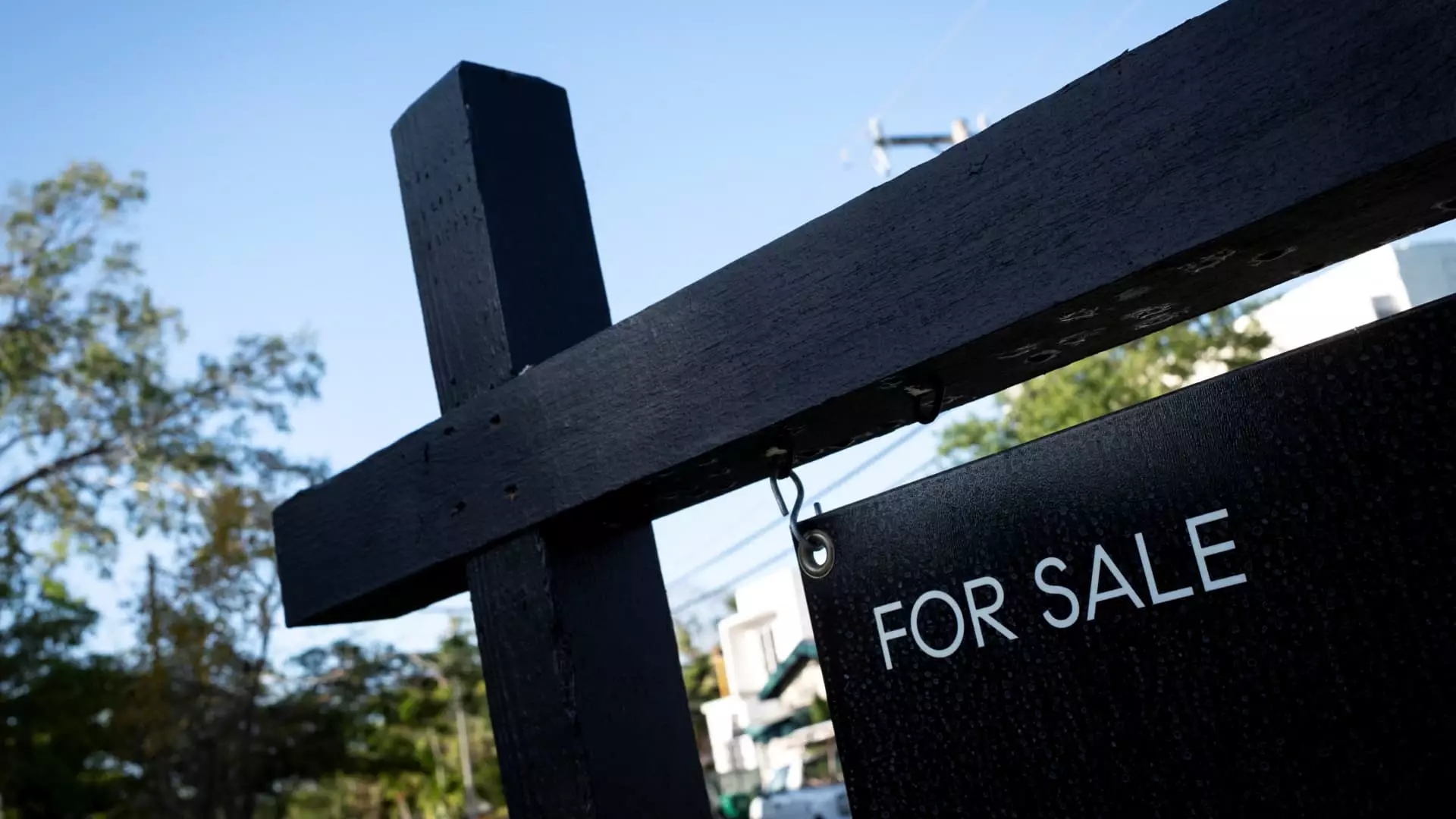The current state of the housing market is a stark reminder of the fragility that underpins consumer sentiment. As potential homebuyers retreat, the statistics paint a dismal portrait of declining mortgage applications. A recent report from the Mortgage Bankers Association disclosed a 3% drop in applications for home purchases compared to the previous week. While numbers may boast a 14% increase when contrasted with last year, the recent trends raise concerns that consumers are grappling with persistent uncertainties and economic instability. It’s disheartening to witness a dissonance between lower interest rates and a retreating market—an ironic twist that begs the question of what is truly driving this downturn.
Interest Rates: A Double-Edged Sword
Notably, the average contract interest rate for a 30-year fixed-rate mortgage has dipped to 6.84%, a decrease that many would view as favorable for potential homeowners. However, this marginal reduction remains overshadowed by broader economic anxieties, particularly regarding geopolitical conflicts and tariff-related tension. Joel Kan, Vice President and Deputy Chief Economist at the MBA, indicates that these societal factors heavily influence buyer decisions. The question looms: Can we trust these fluctuating rates to bolster consumer confidence, or will they continue to falter against the backdrop of instability?
Despite the compelling attraction of lower rates, applications for refinancing home loans—historically sensitive to such changes—also saw a decline of 2%. This illustrates the psychological threshold consumers face; they seem unwilling to act, no matter how alluring the numbers may be. Even a notable 25% year-over-year increase falls flat amid current market fears.
An Imbalance of Perceptions
The tension between the ideal of homeownership and reality is palpable. The average loan size has dropped to $380,200, the lowest since early 2025, and this decline bespeaks a market that is retreating into a defensive posture. Consumers are increasingly hesitant, staring down the barrel of uncertainty about job security, inflation, and foreign policy repercussions.
The housing market, long seen as a cornerstone of the American Dream, no longer feels attainable for many. It’s alarming that VA loan applications have shown a slight uptick, deviating from general trends—suggesting that even in specialized markets, pressures are mounting. It underscores a growing divide where only certain segments of the population feel comfortable making financial commitments.
The Federal Reserve’s Weighty Influence
As we observe this stagnant landscape, the Federal Reserve’s impending decisions loom larger than ever. Whether interest rates are adjusted or held steady, what remains critical is the accompanying narrative presented to the public. The analysis from Matthew Graham, COO of Mortgage News Daily, hints not just at the rates themselves, but at the overarching message the Fed communicates. In a climate where the potential for a rate cut seems non-existent, this reflection of economic realities could further entwine the consumer psyche into a knot of indecision.
In the end, the bleakness of the current housing landscape truly reflects a broader societal malaise. A disheartened consumer base stands chained by uncertainty—a situation that, if left unchecked, will stymie recovery and redefine the framework of homeownership for future generations. The road ahead seems murkier than ever, as the underlying currents of anxiety threaten to engulf the market entirely.

